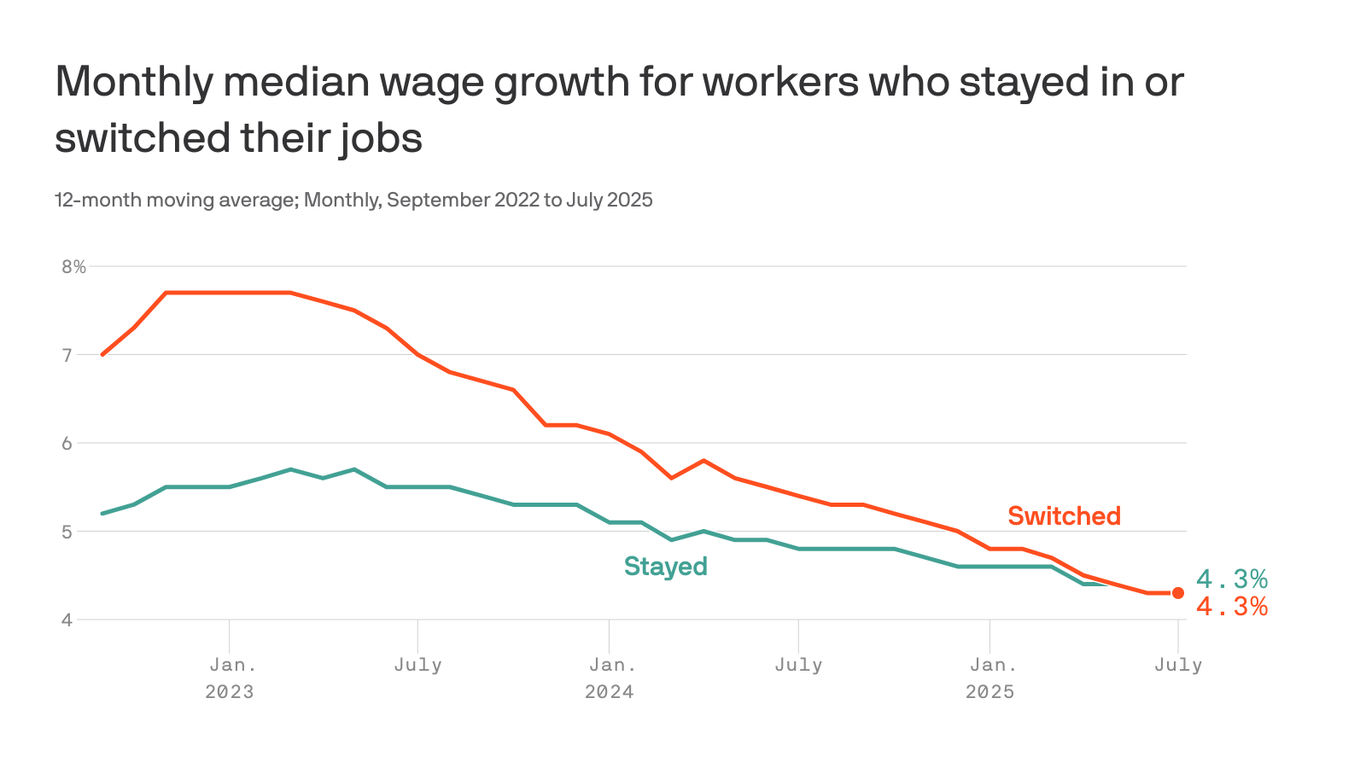
""The balance of power is shifting back towards firms that are hiring," the report states. There's also been a tariff-related pullback, with employers pressing pause on hiring. How it works: Switching jobs is defined as having a different occupation from a year ago, or changing one's employer or job duties in the past three months. By the numbers: The switchers saw a 4.3% average wage increase in July - the same as for those who stayed put, per government data cited in the report."
"The big picture: Since 2010, job switchers always had the pay raise edge over the loyal job stayers. The gap between the two surged during the so-called Great Resignation, when the labor market boomed and job hopping was prevalent. Yes, but: Internal data from Bank of America, which looks at a narrower dataset, found that that the median pay raise for a job mover was 7% - higher than the federal data indicated."
Hiring power is shifting back toward firms, and employers have paused hiring amid tariff-related pullbacks. Job switching is defined as having a different occupation from a year ago or changing employer or job duties within three months. Government data show job switchers saw a 4.3% average wage increase in July, the same as workers who stayed. Since 2010, switchers typically received larger raises, with the gap widening during the Great Resignation. Bank of America internal data shows a median pay raise of 7% for movers, and raises exceeded 20% at the 2022 peak. Weak labor markets encourage employees to 'job hug.'
Read at Axios
Unable to calculate read time
Collection
[
|
...
]